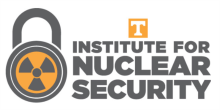Abstract
The potential for a relatively non-advanced nation to covertly acquire a significant quantity of weapons-grade plutonium using a gas-cooled, natural uranium-fueled reactor based on relatively primitive early published designed is evaluated in this article. The economic and technical issues that would influence the design decisions of a covert 239Pu production program are considered.
Several unconventional uranium acquisition approaches were explored. Methods for extracting uranium from enrichment tails, seawater, and coal ash sources were considered. The evaluation indicated that uranium extraction from coal ash or insitu leaching from underground deposits could be performed in economical manner that might be difficult to detect by the international community. These two methods were estimated to be within the technical capabilities of an under-developed national. Calculations performed using the Monte Carlo N-Particle code (MCNP) showed that extracting uranium from enrichment tails would not be a technically feasible source for reactor fuel fabrication because the 235U concentration inside the enrichment tails would not be high enough to maintain criticality in the relatively unsophisticated reactor design considered.
The SCALE code package was used to perform reactor physics and depletion calculations used to evaluate the effect of different combinations of uranium irradiation time and reactor power density had on plutonium production rates and isotope concentrations. The results of these simulations were used to estimate the desirability of the modeled plutonium for use in a weapon with published materials attractiveness figures of merit. All the modeled reactor conditions produced material that was highly attractive for use in a nuclear weapon.
Historical examples of early gas-cooled reactors were used to examine the complexity associate with building various gas-cooled reactor designs. These examples were compared to simulated reactor conditions. The choices that a covert unsophisticated nuclear weapons program might consider when designing a reactor were evaluated. An air-cooled design was found to be a simple and cost effective solution for a group interested in producing a small number of significant quantities (8 kg) of plutonium.
DOI
https://doi.org/10.7290/v7rb72j5
Recommended Citation
Chvala, Ondrej; Skutnik, Steven; Harris, Tyrone Christopher; and Frame, Emily Anne
(2016)
"Evaluation Of Covert Plutonium Production From Unconventional Uranium Sources,"
International Journal of Nuclear Security:
Vol. 2:
No.
3, Article 7.
https://doi.org/10.7290/v7rb72j5
Available at:
https://trace.tennessee.edu/ijns/vol2/iss3/7
Included in
Defense and Security Studies Commons, Engineering Education Commons, International Relations Commons, National Security Law Commons, Nuclear Commons, Nuclear Engineering Commons, Radiochemistry Commons, Training and Development Commons


